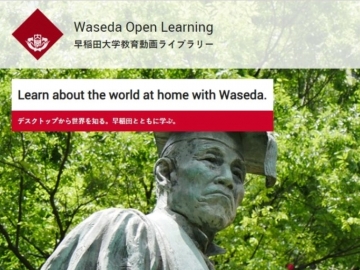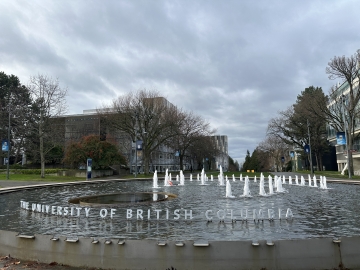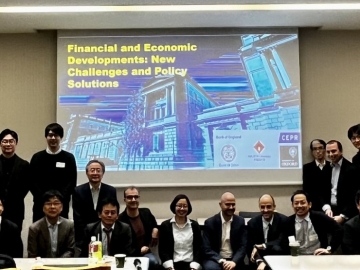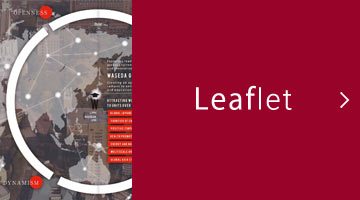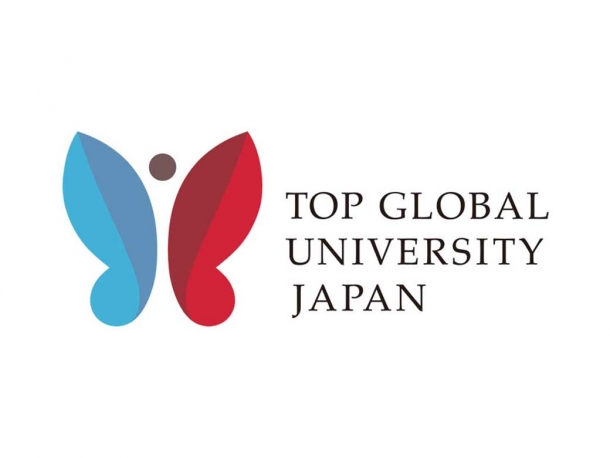A Sinitic Literacy All Our Own: Premodern Japanese Conceptions of Sinitic Writing
On Thursday, May 9th (2019), we were privileged to have Dr. Steiniger, assistant professor in the Department of East Asian Studies at Princeton University, present to us a talk entitled “Sinitic Literature in Heian Japan: Universal Standards Versus Local Practices.” This event attracted a total of seventy-one attendees—so many, in fact, that extra chairs had to be brought in at the last minute in order to accommodate the growing crowd. Among the audience members were professors, both those from Waseda as well as from other institutions, students at both the undergraduate and graduate levels, along with a large number of researchers.

Dr. Steininger’s talk, delivered in Japanese, aside from being informative, provided all in attendance with a stimulating new approach to Sinitic studies. In the study of Heian-period (794-1192) Japanese literature, the question of how best to conceptualize the place of Sinitic literature or literacy (kanbun 漢文) has long been, and still is, an issue fraught with a number of difficulties. In this talk, Dr. Steininger has presented us with a more nuanced way of approaching the role of Sinitic literacy. By drawing our attention to a tenth-century Japanese manual dedicated to the fundamentals of Sinitic composition entitled Sakumon daitai 作文大体, or The Rudiments of Composition, Dr. Steininger invites us to consider ways in which Japanese intellectuals of that period came to re-conceptualize Sinitic literacy.
Dr. Steininger drawing upon the research of Obara Hitoshi 小原仁 (1944-), a prominent scholar of Japanese history—also in the audience that day—drew our attention to the concept of honchō ishiki 本朝意識, that is, a growing consciousness or awareness on the part of Japanese intellectuals of their own unique presence in the broader East Asian cultural sphere. This awareness did not manifest itself simply as a sense of superiority over the Chinese cultural tradition. Heian intellectuals recognized the presence within their own land of a unique species of Sinitic literacy that was both local and modern. Instead of viewing Sinitic literacy as something that was fundamentally distant—a product of continental China’s ancient past—Japanese scholars began to see themselves as holders of a more bona fide, modern, home-grown Sinitic tradition all their own, one that no longer depended on continental prestige or ancient tradition for legitimization. At this time in Japan’s history, scholars of classical literature who had graduated from or who worked for the imperial university (daigakuryō 大学寮) were under increasing danger of losing their sociopolitical clout, in virtue of the fact that the place of Sinitic learning—their area of expertise and primary claim to fame—was being slowly but surely compromised. This new approach to Sinitic literacy, which insisted on the existence of (and therefore the need for) a local, modern Sinitic literacy, provided a foothold whereby the community of struggling university scholars could potentially revive their falling social status.
As soon as we attempt to reconceptualise the role of Sinitic literacy in Heian Japan in this way—i.e., as a growing consciousness of a distinctly local and (then) modern species of Japanese Sinitic literacy—we must ask not only what this new conceptualization was, what it embraced, but also what it necessarily excluded, what it pushed aside as foreign to itself.

Sakumon daitai contains ten articles (soku 則), each dealing with a different aspect of Sinitic composition. Nearly all of these articles revolve around issues relating to formal concerns, such as rhyme, meter, tonal rhythms, parallel constructs (tsuiku 対句), and so on. While to us modern readers this may come across as somewhat odd, the fact is, formal concerns were of foremost importance in the Chinese literary tradition as far back as the third century ad. Within this tradition, the written (and intoned) word was understood in a quasi-religious sense to serve as a potent vehicle for cosmological, social, and moral ordering. Consequently, formal harmony—melodious rhyme and meter, properly matching parallel sentences, tonal harmony—far from being a merely formal concern, was intimately connected with the larger picture. To put it very simply, well-ordered writing was imagined to both reflect and further enforce a well-ordered society, as well as a well-ordered cosmos. The fact that Sakumon daitai dedicates so much space to strictly formal issues of literary composition is an accurate reflection of this age-old continental strain of literary thought.
In line with this type of literary thinking was the belief that the nature and function of literature, broadly conceived as the well-ordered written word, was both timeless and universal. Literature is literature wherever and whenever it is written. The same sort of formal concerns surrounding Sinitic writing hold true regardless of whether the writer (or speaker) happens to be in ancient China or modern Japan. More specifically, for literature to exert its harmonizing powers, the same tonal rhythms and structural strictures must be meticulously adhered to by anyone engaging with the apparatus Sinitic literacy. So far so good. Insofar as this grand assumption is concerned, tenth-century Heian intellectuals were in agreement with continental literary thought. They eagerly embraced the idea of a universal and timeless Sinitic literary apparatus.
The Heian period court forever busied itself with the performance of rituals, In these rituals, Sinitic poems and other official compositions, as vehicles of social and cosmic cohesion, would be intoned for all to hear. During the ninth and tenth centuries, in these rituals held within the Heian court, we see a marked move away from reading Sinitic composition phonetically (ondoku 音読), that is, in the grammatical order and rhythm of the original, instead towards a more semantic reading (kundoku 訓読), in which the text was parsed and reordered to fit Japanese vernacular conventions. This practice of intoning Sinitic texts in accordance with Japanese vernacular conventions meant, of course, that the tonal rhythms, meter, rhyme, and other formal patterns—while maintained on the written page, were significantly refigured or deformed when read aloud. The tenth and final article in Sakumon daitai contains a revealing note to this effect. In effect, this particular article urges scholars to consider not only the time-honored formal rules of Sinitic composition, but to give serious attention to the manner in which a given Sinitic text is to be read aloud, that is, the way in which its syntax must be remodelled in accordance with Japanese vernacular conventions. What this article reveals to us is that, at some time beginning no later than the tenth century, Sinitic literacy had been reconceptualized in such a way that it embraced within itself two different levels or aspects. On one level, Japanese composers of Sinitic texts adhered more-or-less faithfully to continental rules of formal harmony; their compositions, if read phonetically using a certain form of classical Chinese, were supposed to meet all the standards of rhyme and rhythm. On another level, these same Japanese writers were well aware of the fact that their compositions were going to be read aloud in front of a (primarily) Japanese audience, not in any form of Chinese, but through the well-developed medium kundoku, or vernacular parsing. The first (formal) level is, so far as Sakumon daitai is concerned, mostly a conceptual concern, really a matter of form, while the later level relates to the actual performance or intoning of a text. Formal concerns necessarily fade into the background when practical matters of recitation are taken into consideration.
In the tenth article of Sakumon daitai just mentioned, considerations relating to the actual performance or recitation of Sinitic texts are referred to collectively as zokusetsu 俗説, a term that, in this context, might best be translated as local customs. The fact that such considerations are placed alongside more traditional, formal conventions of Sinitic composition suggests that Heian intellectuals did indeed see the world of Sinitic literacy as possessing a twofold existence: a universal, timeless, and formal existence, on the one hand, coupled in Japan with a local (home-grown), (then) modern, and performative existence mediated by conventions of kundoku.
After Dr. Steininger finished his talk, our commentator for the day, Dr. Kawajiri Akio (Waseda University), posed a number of questions regarding some of the finer details touched upon throughout the talk. One of the more pressing concerns related to the precise manner in which we ought to understand the terms honcho 本朝, “the kingdom or land (of Japan),” and kokufū 国風, “local (Japanese) customs,” within the context of Japanese history, both during the Heian period and after.

After this brief exchange between Dr. Kawajiri and Dr. Steininger, about thirty minutes were then dedicated to talking questions from the floor. It was a real pleasure to see students and scholars from countries outside of Japan participating so eagerly in this portion of the talk; some asked questions in Japanese, while others asked their questions in English. As might be expected, most of the questions and observations revolved around two central concerns. First, how did Japanese writers and thinkers go about conceptualizing their own identity in relation to the world of Sinitic literature? Second, in what way did the reputation or reception of Sinitic literacy change throughout Japan’s history? Concerning both of these central questions, numerous comparisons were drawn by audience members between Heian Japan, on the one hand, and Edo-Meiji Japan, on the other. Comparisons of this sort proved particularly instructive, insofar as they encouraged us to approach these issues from a broader perspective. In relation to the history of kundoku, for example, one of the audience members pointed out the fact that, during the Edo period, classical Sinitic texts were being rendered into colloquial Japanese, and that this phenomenon marked a significant move away from the more orthodox kundoku practices handed down from the Heian period. Concerning the notion of kokufū, questions about an awareness of local literary practices were raised in relation to the evolution of calligraphy in Japan.
All in all, this was a meaningful event for all concerned.
■Event Overview
“Sinitic Literature in Heian Japan: Universal Standards Versus Local Practices.”
Date & Time: May 9th (Thu) 2019, 3:00 pm-4:30 pm
Venue: Conference Room#10, Bldg.33-16F, Toyama Campus, Waseeda University
Speaker: Brian Steininger (Assistant Professor/Princeton University)
Commentator: Akio Kawajiri (Professor/Waseda University)
Moderator: Kristopher Reeves (Assistant Professor/Waseda University)
Kimiko Kono (Professor/Waseda University)
Language: Japanese
Participants: student, faculty, and general people
Sponsors: Graduate School of Faculty of Letters, Arts and Sciences, Global Japanese Studies course (Global-J), Top Global University Project, Global Japanese Studies Model Unit, Waseda University, Research Institute for Letters, Arts and Sciences, Waseda University
Co-sponsor: Research Institute of Japanese Classical Books, Waseda University
